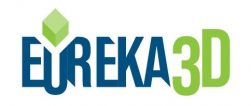EUreka3D and EUreka3D-XR Resources
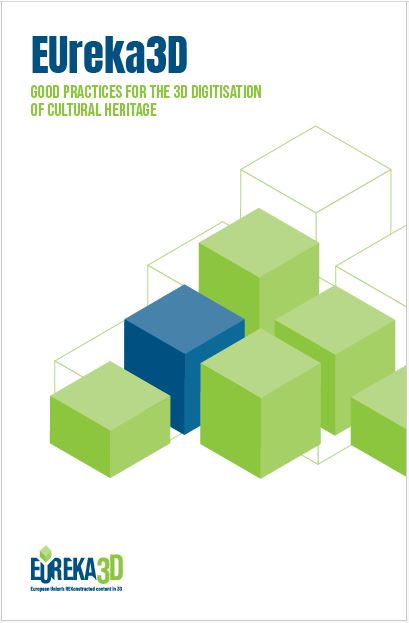
EUreka3D is the acronym for European Union’s REKonstructed content in 3D, a project co‑funded by the Digital Europe Programme of the European Union. This publication, entitled “EUreka3D: Good Practices for the 3D Digitisation of Cultural Heritage” is the final booklet of the project. The Final Booklet mainly focuses on the methodology for 3D digitisation, the EUreka3D Data Hub, the project’s impact and sustainability, and the project’s four use cases.
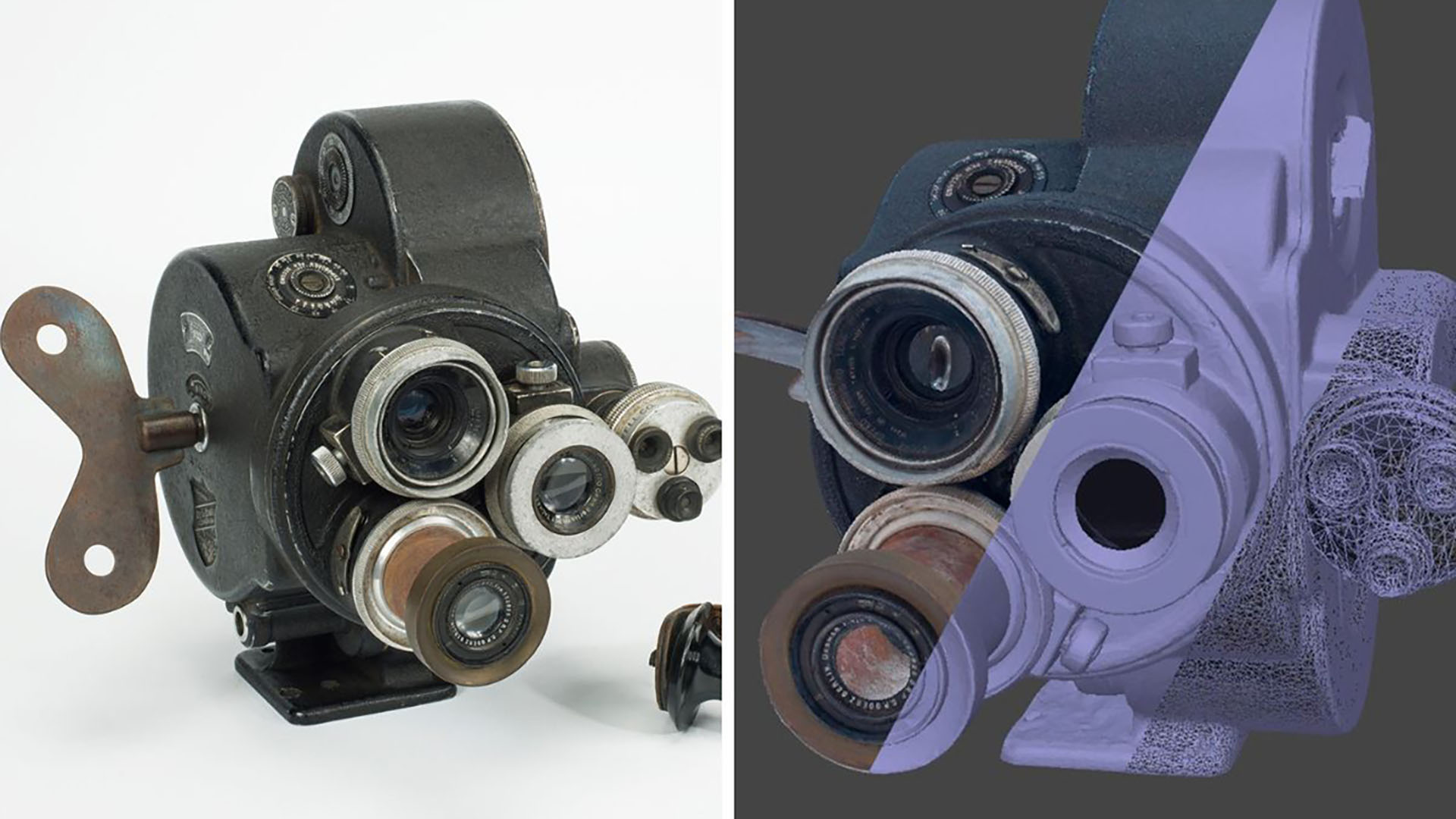
The self-paced course on Europeana Training Platform “3D digitisation: prepare for success“ is designed to help anyone on their 3D digitisation journey, specifically aimed at Cultural Heritage professionals who are considering, or in the middle of, digitising their cultural heritage collections using three dimensional models.

This book presents a collection of papers focussing on 3D digitisation in the domain of cultural heritage. The use of data acquisition technologies in digitising cultural heritage holds great potential for preserving and disseminating the history of mankind. However, to exploit these opportunities in full, comprehensive guidelines for documenting the process of digitisation are required. Only then can the efficiency and credibility of digital representations be assured. Some EUreka3D-XR project partners have contributed to the publication.
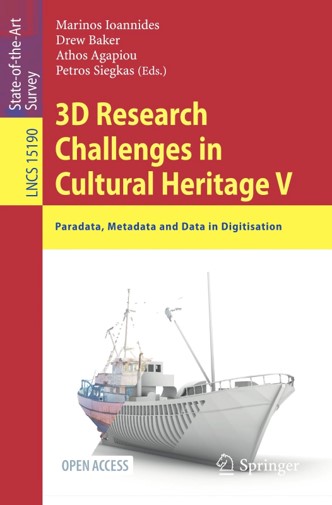
This open access book created in the context of EUreka3D presents a collection of papers focussing on 3D digitisation in the domain of cultural heritage arising from the webinars held by the project. A major focus of the 16 papers included in this State of the Art Survey is on all aspects of the documentation of the digitisation process, i.e. paradata, which alongside metadata, is critical to the scientific rigour, replicability and sustainability of digital heritage resources.

This guide is designed to help anyone on their 3D digitisation journey and it is published in the context of EUreka3D project. It is specifically aimed at Cultural Heritage professionals who are considering, or in the middle of, digitising their cultural heritage collections using three dimensional models. It outlines and simplifies the recommended standards highlighted in the above mentioned EU VIGIE Study 2020/654 (Study on quality in 3D digitisation of tangible cultural heritage, published April 2022).
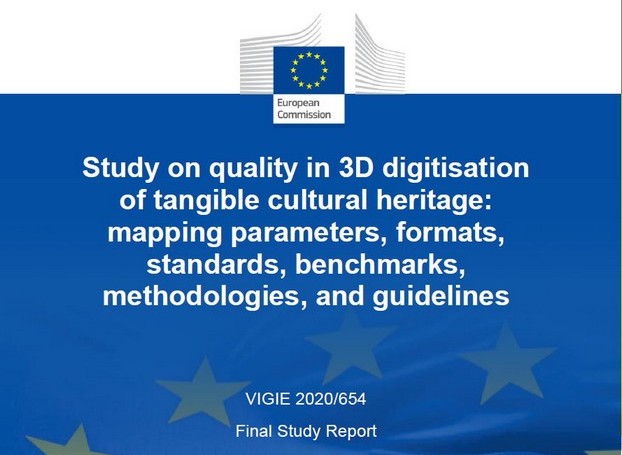
The main objective of the study (VIGIE 2020/654) is to map parameters, formats, standards, benchmarks, methodologies and guidelines which relate to 3D digitisation of tangible cultural heritage, to different potential purposes or uses and to general-purpose visualisation, by type of tangible cultural heritage, whether. immovable or movable, and by degree of complexity. An important goal of the study is to produce a framework that would enable cultural heritage professionals, institutions and other custodians of cultural heritage, providers of 3D digitisation services for cultural heritage and other researchers in 3D digitisation technologies to define and produce high quality in the context of specific 3D digitisation projects for tangible cultural heritage. The study consortium is formed by one tenderer, the Cyprus University of Technology (CUT) and a group of expert subcontractors.
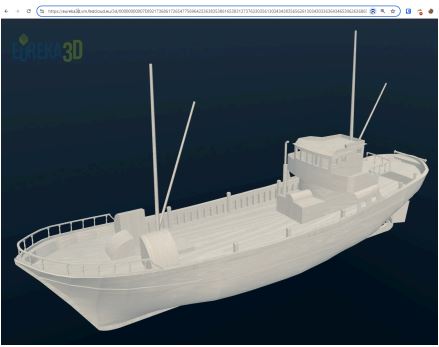
The project developed the EUreka3D Content Provider Handbook, an informal document that explains in a practical way the steps required to use the data hub, focusing especially on the upload of 3D models by content providers. This can be considered as a manual for the upload of data that complements the official deliverables of the project.

This open access book presents a collection of papers focusing on a range of digital technologies and their use in the protection and restoration of cultural heritage. Digital tools – from 3D scanning and photogrammetry to Heritage Building Information Modeling (HBIM), Digital Twins, and Extended Reality (XR) – are transforming the way we understand and care for tangible heritage. These technologies are applied to both record the physical form and material conditions of a site and to permit simulations of deterioration, design interventions, and careful reconstruction.
Marinos Ioannides, co-author of this publication, is the Director of UNESCO Chair on Digital Cultural Heritage MNEMOSYNE at the Cyprus University of Technology, one of the EUreka3D and EUreka3D-XR partners.

Hosted in Europeana Knowledge Base, this Publishing Guide for 3D content collects aspects to keep in mind when starting digitising 3D. The content has been summarised by the Expert Group on Digital Cultural Heritage and Europeana. This documentation and support aims to help cultural heritage institutions digitise their 3d content and publish on the Europeana website.
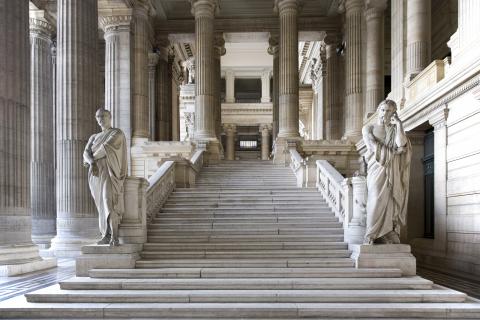
The Expert Group on Digital Cultural Heritage and Europeana has been tasked by the member states to contribute to the development of guidelines on 3D cultural heritage assets. The resulting list of basic principles and tips for 3D digitisation of tangible cultural heritage contains 10 basic principles and a number of tips for each of them geared toward cultural heritage professionals, institutions and regional authorities in charge of Europe’s precious cultural heritage.

The Rijksmuseum Manual for the photography of 3D objects gives an overview of the way in which the Rijksmuseum studios photograph object groups. The manual provides instructions about the different lighting setups for photographing objects which fall into one of two categories: standing objects or lying objects. It includes examples of photographs to illustrate which perspectives and object-specific images are chosen.
This manual aims at contributing to an international dialogue about the standardization of cultural heritage object photography.
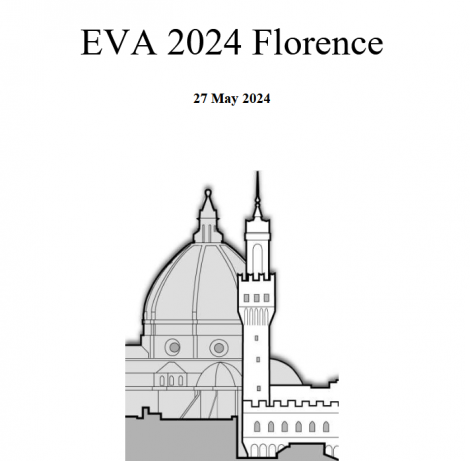
EUreka3D project was accepted for a paper and presentation in the prestigioius annual conference EVA Electronic Imaging and the Visual Arts, organised in Florence by Professor Vito Cappellini, University of Florence. Read the abstract and download the full paper about EUreka3D aims to support Cultural Heritage Institutions in implementing high quality 3D digitisation for the purposes of reuse by a variety of stakeholders.

The 4D Research Lab (University of Amsterdam) aims to promote the use of 3D technologies in the documentation, analysis and dissemination of academic research dealing with the material past. The lab also assists the development of methods that use 3D technologies in the process of research, by achieving high academic standards for the publication of 3D visualizations. On this site, resources on drone remote sensing, virtual reconstruction, 3D scanning and augmented&virtual reality are available.
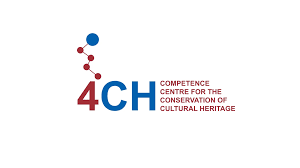
The main objective of this report by The 4CH Project (Competence Centre for the Conservation of Cultural Heritage) is to present an overview on standards, procedures and protocols to Cultural Heritage (CH) digitisation, based on a critical review of the State-of-the-Art in data capturing, data processing and data storage/access within the overall framework of Heritage Documentation.

Portal DIKD presents the results of the Call for Proposals for Competence Development of Leading Tourist Destinations and Development of the Tourist Offer in Leading Tourist Destinations in 2020 and 2021, co-funded by the Ministry of Economic Development and Technology of Slovenia. The call for proposals co-funded more than 110 3D models of cultural heritage listed in the Register of Immovable Cultural Heritage.

The Giravolt project is an initiative of the Catalan Government’s Ministry of Culture, implemented via its Directorate General for Cultural Heritage and the Catalan Agency for Cultural Heritage. The project has been launched in order to promote the use of 3D scanning technology, as well as the treatment of the resulting models, within the field of Catalan cultural heritage.
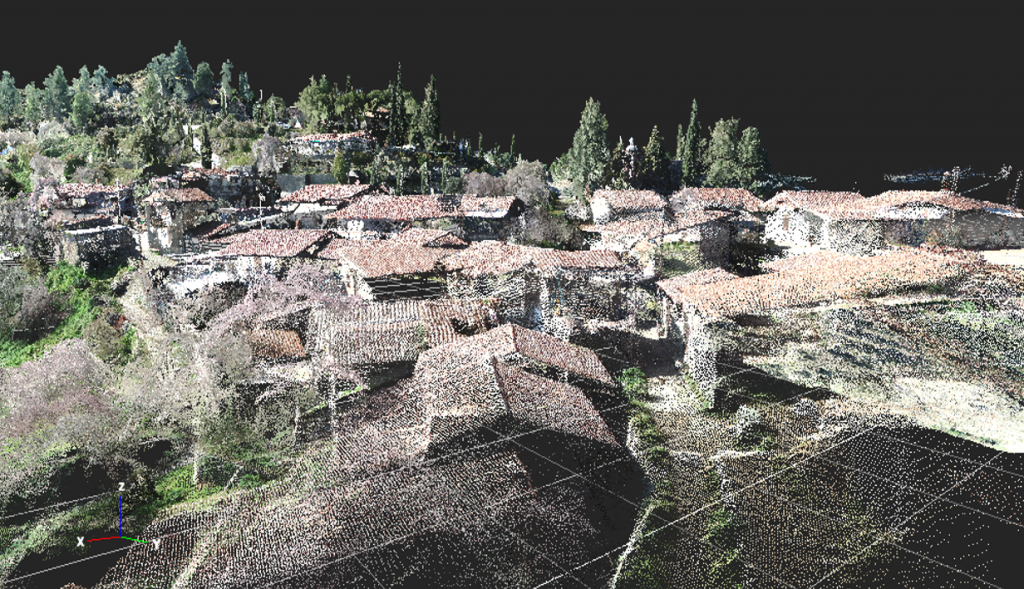
eFikardou is the platform dedicated to the holistic digitization of the village of Fikardou (Cyprus), by Cyprus University of Technology. Its mission is to preserve and showcase the rich cultural heritage of Fikardou in a way that is accessible to all, by creating a comprehensive digital representation of the village. The aim is not only to educate people about its historical significance but also to inspire them to engage with and preserve cultural heritage sites in their own communities.
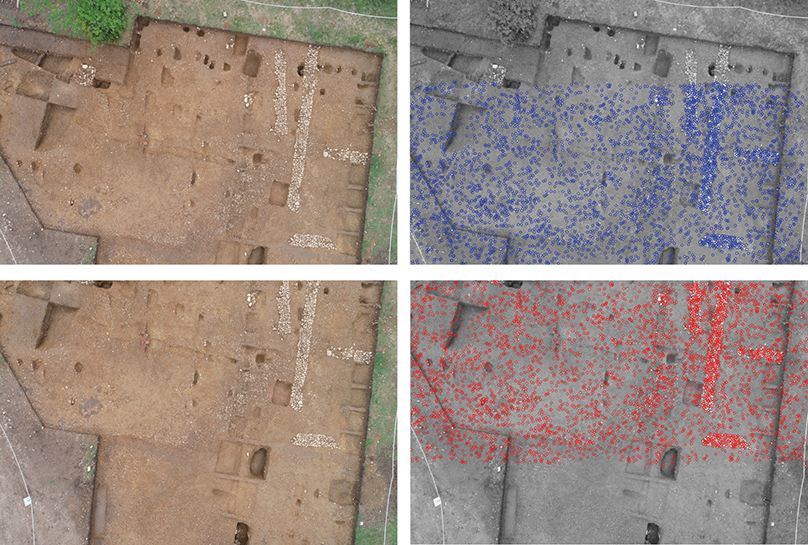
A doctoral research, conducted in partnership with the University of Franche-Comté and Bibracte, has focused on orthophotographic surveying through photogrammetry applied to archaeological heritage. The online version is available for open access in French.
This guide aims to provide archaeology students and professionals with a complete protocol—from field acquisition to data storage— that is proven, reproducible, and entirely based on scientific tools that are free and open-source.
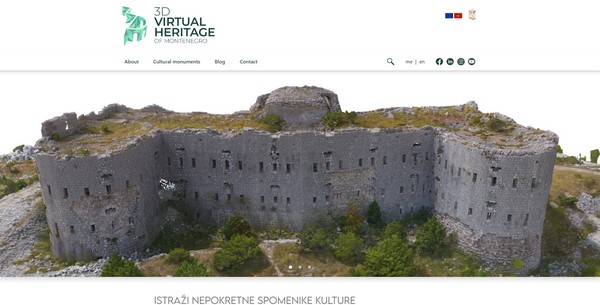
3D Virtual Heritage (project title) is online platform for promoting 3D models of Cultural Heritage Monuments in Montenegro.
3D VIRTUAL HERITAGE project is co-funded by EU and the Government of Montenegro.
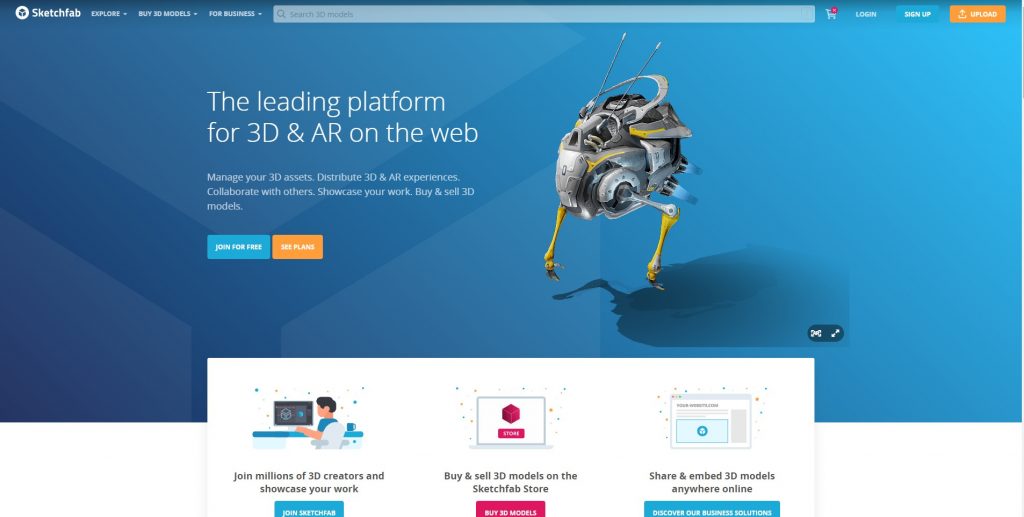
Sketchfab is a platform for publishing and finding 3D content online. With a community of millions of creators who have published millions of models, is the largest platform for immersive and interactive 3D. Additionally, its store lets buyers and sellers transact 3D models with confidence using its realtime viewer and model inspector.
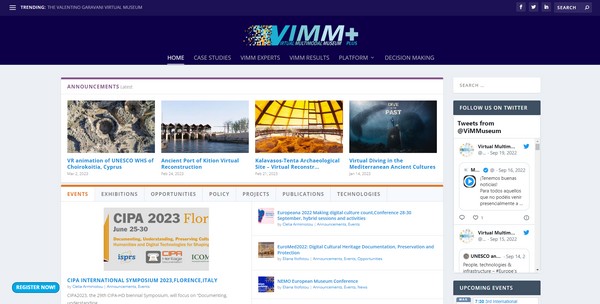
ViMMPlus builds on the results of the Virtual Multimodal Museum (ViMM) ve Coordination and Support Action (CSA), funded under the EU Horizon 2020 programme, bringing together Europe and the world’s leading public and private sector organisations working on DCH, supporting high quality policy development, decision making, competence building and the use of technical advances.
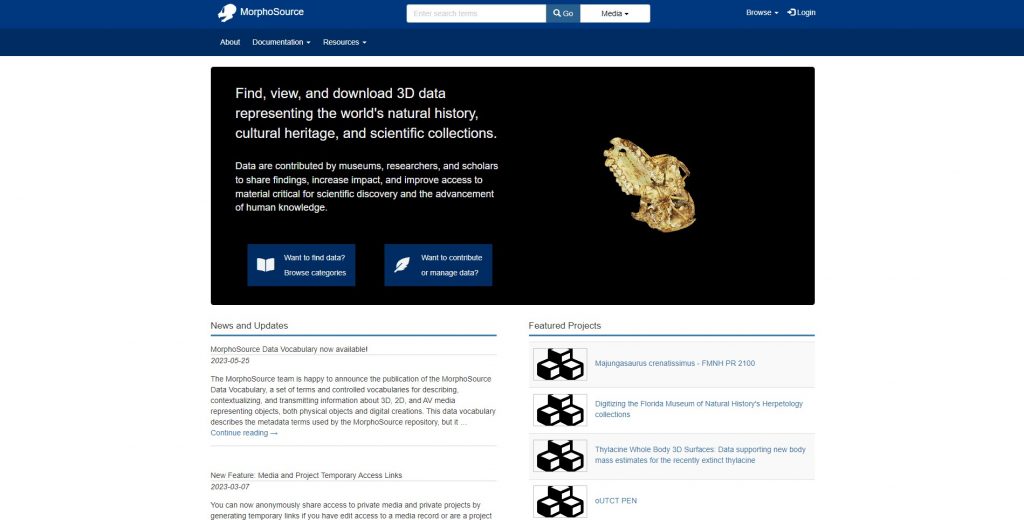
MorphoSource is a virtual museum where researchers, museum curators, and the public can find, download, and upload 3D media of physical objects, typically biological specimens from museums. Things you can find and see on MorphoSource include hominin fossils millions of years old, entire whale skeletons, ancient marine invertebrates, and many others.

V4Design is a consortium integrated by 11 partenrs: The Centre for Research and Technology-Hellas (CERTH) – Information Technologies Institute (ITI), KU Leuven, Universitat Pompeu Fabra (UPF), Robert McNeel & Associates, Herzog & de Meuron (HdM), The Aristotle University of Thessaloniki (A.U.Th.), Solaris Filmproduktion GbR (SFd), ArtFilms Ltd (AF), Deutsche Welle (DW), Europeana Foundation (EF) and Nurogames (NURO).
V4Design aims to enable the re-use and re-purpose of such multimedia content by proposing an innovative solution for its effective integration, so as to extract 3D representations and VR game environments.

The Open Heritage 3D project was developed to make primary 3D cultural heritage data open and accessible and remove the barriers for content producers to publish their data. CyArk along with other founding organizations University of California San Diego, Historic Environment Scotland and the University of South Florida Libraries committed in 2019 to make available their significant repositories of data from legacy as well as new 3D documentation projects. Since then other organizations have joined the initiative, contributing over 200 datasets and we invite others to join the Open Heritage 3D project and contribute their datasets to this growing library of data.

Open Heritage 3D, on Google Arts & Culture is a dedicated portal for sharing 3D cultural heritage data and its results with everyone. The project was launched by CyArk in partnership with Historic Environment Scotland and the University of South Florida, organizations with a shared commitment to opening their 3D datasets to the world.

INCEPTION realises innovation in 3D modelling of cultural heritage through an inclusive approach for time-dynamic 3D reconstruction of artefacts, built and social environments. It enriches the European identity through understanding of how European cultural heritage continuously evolves over long periods of time. INCEPTION’s Inclusive approach comprises: time dynamics of 3D reconstruction (‘forever’); addresses scientists, engineers, authorities and citizens (‘for everybody’); and provides methods and tools applicable across Europe (‘from everywhere’).
